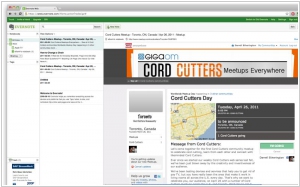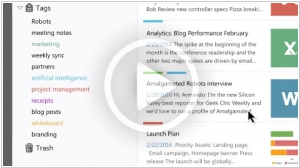Evernote vs FileMaker
August 23, 2023 | Author: Michael Stromann
9
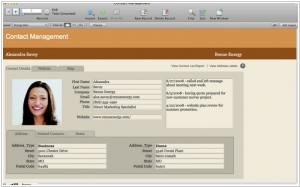
Award-winning business and personal database software for iPad, iPhone, Windows, Mac and the web. Streamline your business with the FileMaker Platform. Easily create custom solutions for iPad, iPhone, Windows, Mac and the web that meet the unique needs of your organization. Manage customer data, track assets, organize projects, run reports, and more. With the FileMaker Platform you'll be able to improve workflow, save money, and increase overall efficiency.
Evernote and FileMaker are two distinct software applications with different purposes. Evernote is a note-taking and organization tool designed to capture, store, and organize various types of information, such as notes, documents, images, and web clippings. It offers cross-platform compatibility and synchronization, allowing users to access their notes from multiple devices. Evernote focuses on personal productivity and information management.
On the other hand, FileMaker is a powerful database management system that enables users to create custom applications for managing and organizing data. It provides a visual development environment and a range of features for building robust database solutions. FileMaker allows users to create custom forms, automate workflows, and generate reports, making it suitable for businesses and organizations that require more advanced data management capabilities.
See also: Top 10 Low-Code Platforms
On the other hand, FileMaker is a powerful database management system that enables users to create custom applications for managing and organizing data. It provides a visual development environment and a range of features for building robust database solutions. FileMaker allows users to create custom forms, automate workflows, and generate reports, making it suitable for businesses and organizations that require more advanced data management capabilities.
See also: Top 10 Low-Code Platforms
Evernote vs FileMaker in our news:
2023. Evernote to restrict free users to 50 notes
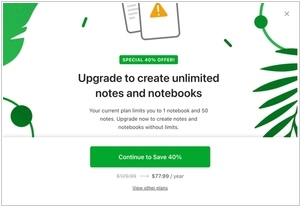
Evernote has revamped its free plan, restricting users to a single notebook and 50 notes, which now serves as the default free plan. This alteration will apply to both new and existing free users starting from December 4. In an official blog post, Evernote explained that users can manage the limit by deleting content from their notebooks to make room for new entries. Moving forward, both new and existing free users will be constrained to a maximum of fifty notes and one notebook per account. These limitations pertain to the total number of notes and notebooks a user can have concurrently, with the option to remove unwanted content to stay within the specified boundaries. Existing free account users with over 50 notes can export surplus notes and notebooks.
2020. FileMaker 19 allows low-code development using readily-available JavaScript libraries
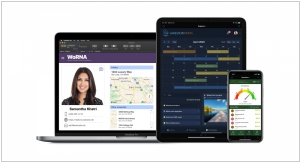
Claris, a subsidiary of Apple, has introduced FileMaker 19, their inaugural open platform empowering developers to swiftly construct sophisticated custom applications. This latest release incorporates various advancements such as direct JavaScript integrations, drag-and-drop add-ons, AI capabilities through Apple's Core ML, and more. With FileMaker 19, developers can effortlessly create applications using plug-and-play add-ons, enabling the seamless assembly of robust apps in record time. Additionally, they can leverage JavaScript, web services, native FileMaker code, and other tools to develop shareable add-ons for sale on the Claris Marketplace. Moreover, the new version enables the creation of apps directly within the FileMaker Cloud, eliminating the complex configuration process and facilitating instant sharing of applications.
2018. Evernote refines integrations with Slack and Salesforce
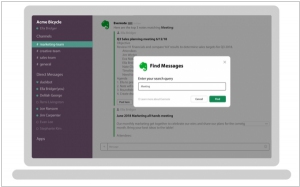
Evernote Business has introduced enhanced accessibility to Evernote content from within Slack and Salesforce. Leveraging the new Slack Actions feature, Evernote has moved away from the previous command interface style of Slack, streamlining access to Evernote content for their core knowledge workers directly within Slack. Users can now create an Evernote note in Slack, which will automatically appear in Evernote within a designated "Notes from Slack" folder. Furthermore, the updated Salesforce integration strengthens the technical connectivity between the two cloud applications. This integration allows users to "pin" a note to a record in Salesforce. Notably, there is a two-way sync feature, meaning that any changes made to a linked note in either Salesforce or Evernote will be automatically updated in both platforms, as the integration maintains a live version of Evernote.
2018. Evernote adds project management Spaces
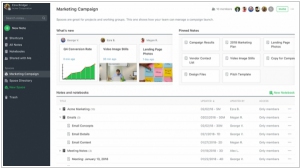
The latest addition to Evernote Business is a feature called Spaces, designed to enhance team collaboration and project progression. With Spaces, teams can effectively transform their ideas into actionable steps and propel their projects forward. This feature provides team members with a comprehensive view of the project's scope through the "What's new" and "Pinned notes" tiles, allowing them to stay informed about the latest updates and prioritize important activities. By making spaces discoverable, teams can tap into valuable business knowledge, while also exploring and connecting with other spaces through the Space Directory. Currently, Spaces is exclusively available as part of the Evernote Business plan, priced at $14.99 per user per month.
2017. Evernote integrates with Slack
Evernote has introduced a new integration with the widely popular messaging app Slack. Evernote serves as the hub for organizing your ideas, while Slack facilitates the connection of your ideas with others. By seamlessly combining these two tools, you can minimize the time spent on searching and maximize your productivity. With the utilization of the /note command within Slack, you can quickly jot down notes, create to-do lists, or set reminders, all without navigating away from your ongoing conversation. Alternatively, the /clip command allows you to capture Slack messages and save them as notes in Evernote, categorizing them by date, importance, or URL. Furthermore, the /find command enables you to effortlessly search for specific notes and instantly share a snapshot with your team, all without leaving the Slack interface.
2016. Evernote limits free plan to 2 devices and raises prices
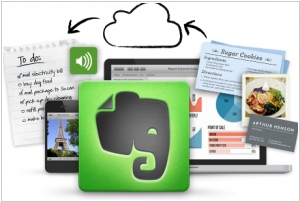
Evernote, the note-taking app, has implemented a new pricing policy. The Basic plan, which remains free, has now become restricted to a maximum of two devices. While this limitation might be sufficient for the average user, it is still a significant constraint. However, Evernote aims to avoid upsetting the majority of their free users with this change. To compensate, they have introduced the passcode lock feature to the Basic plan, which helps alleviate the impact. Additionally, the cost of the Plus plan has increased from $3 to $4 per month (or $35 per year), while the Premium plan has gone up from $6 to $8 per month (or $70 per year). The Plus plan provides 1GB of storage, and the Premium plan offers 10GB. For a detailed overview of the features included in these plans, please visit the Evernote site.
2016. Evernote unveiled new Windows app
Evernote has introduced a significant update to its desktop client designed specifically for Windows users. This latest release not only includes a revamped user interface but also incorporates several new features. Now, users can conveniently access, create, and delete notebooks and tags directly from the left-hand pane, which can be minimized to optimize screen space. Moreover, users have the option to assign colors to notebooks and tags (accessible via right-click) to enhance their visibility in the left-hand pane. For business account users, personal and business notes are visually separated, providing the flexibility to choose the displayed content. The previous mixed note lists have been eliminated. Additionally, the update introduces convenient keyboard shortcuts for swiftly switching between personal and business modes. The new version guarantees improved stability and performance, with notably faster search capabilities.
2014. Evernote rolls out built-in chat
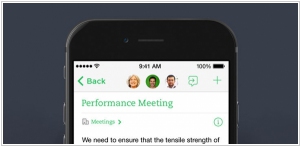
The latest update to the web and mobile applications of Evernote, the online note-taking and collaboration service, introduces a new feature called "Work Chat." This feature enables users to engage in discussions and collaborate on ideas and projects directly within the Evernote interface, eliminating the need to switch to email for such conversations. Furthermore, when you send a note via email to someone, it will now automatically appear in Work Chat, ensuring a permanent record of your communications. You have the flexibility to chat with individuals or groups, and if desired, you can synchronize the app with your Google Contacts as well. When initiating a chat with another user, they will receive notifications both within the app and via email, informing them about the chat and providing a button to launch Evernote upon clicking.
2014. Evernote unveiled AI tool and new web interface
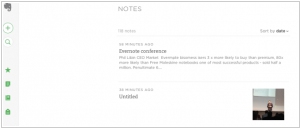
The popular note-taking Evernote is expanding its vision beyond storing regular notes and thoughts. With the introduction of Evernote Context, an AI-powered feature, the app aims to provide users with relevant and suggested content from third-party sources as they engage in reading and writing activities. This entails incorporating a new content feed from external sources directly within Evernote. The content will seamlessly integrate with the work being done within the app, whether accessed on a desktop or another client. Additionally, Evernote has unveiled a new web app that embraces a more spacious design, employing ample white space across the interface. This cleaner workspace ensures that past notes don't visually overshadow new ones to the same extent as in the native desktop app.
2014. Evernote and LinkedIn integrate business cards into social network
Business card scanning apps have been available on the market for some time, including popular ones like Evernote. These apps offer a convenient solution for business professionals overwhelmed by overflowing wallets filled with business cards. However, they fail to address a significant challenge: contact information often changes over time. Thankfully, social networks, particularly LinkedIn, have resolved this problem by enabling individuals to update their own contact details, which are automatically synced with their friends' address books. Recently, LinkedIn integrated with Evernote, resulting in a seamless experience. Now, all you need to do is capture a photo of a business card, and your smartphone instantly displays the person's LinkedIn profile. From there, you have the option to connect with the CEO, secretary, or digital prophet on LinkedIn, or add their contact information to your address book. However, the real intrigue begins as your business relationship develops. Over time, you can enrich the card's page in Evernote by adding audio recordings from meetings, relevant documents, or even key emails exchanged with that individual.

